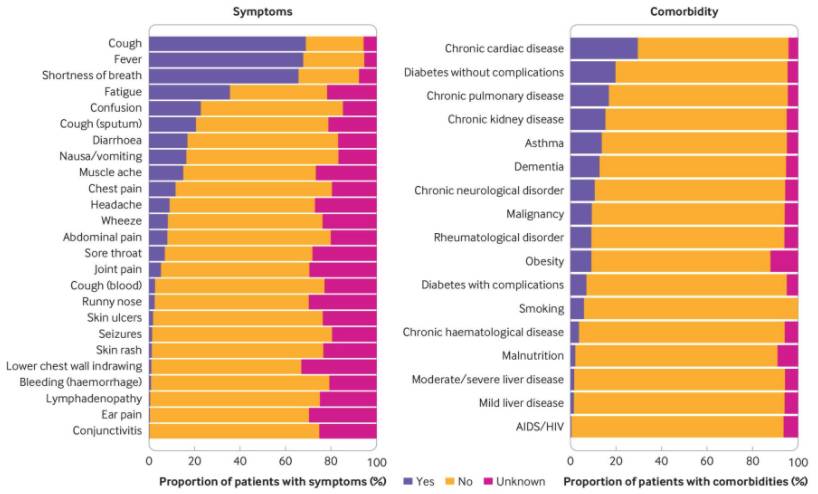One of the most thorough studies of its kind, involving more than 20,000 patients in the UK across 208 hospitals, has ranked the main risk factors linked with the worst outcomes for COVID-19. Additionally, the study also ranked the main symptoms of coronavirus based on their frequency.
The British researchers, which are affiliated with universities from across the country, assessed the clinical features of patients admitted to hospitals with COVID-19 during the early growth phase of the first wave of the outbreak, between 6 February and 19 April 2020.
The median age of the 20,133 hospital inpatients with COVID-19 was 73 years while the median duration of symptoms before admission was required was 4 days (1-8 days).
According to the assessment, there are four main risk factors that are associated with developing the most dangerous coronavirus symptoms: age, sex, weight, and underlying illness.

Aside from old age, the researchers found that being male is an important factor, with 60% of coronavirus patients being male.
The vast majority of hospitalized coronavirus patients had at least one underlying chronic disease, with cardiac disease being the most prevalent among those who died, followed by asthmatic chronic pulmonary disease, chronic kidney disease, and liver disease.
Lastly, obesity was also found to be an important risk factor, although other studies have not linked obesity with in-hospital mortality after adjusting for other comorbidities, age, and sex.
Something should be said about smoking, too. Only 6% of the patients were current smokers and 30.8% were previous smokers. Although the study was not able to class smoking as a comorbidity, another recent study performed at Imperial College in London found that smokers were 14% more likely to end up in a hospital with coronavirus symptoms than non-smokers.

The study also tallied the most frequent coronavirus symptoms, such as cough, fever, shortness of breath, fatigue, and confusion, in this order.
These findings are very similar to other studies that reported on COVID-19 risk factors and symptoms. However, it’s valuable to see them confirmed by a massive study such as this, involving more than 20,000 hospitalized patients.
The findings were reported in The BMJ


